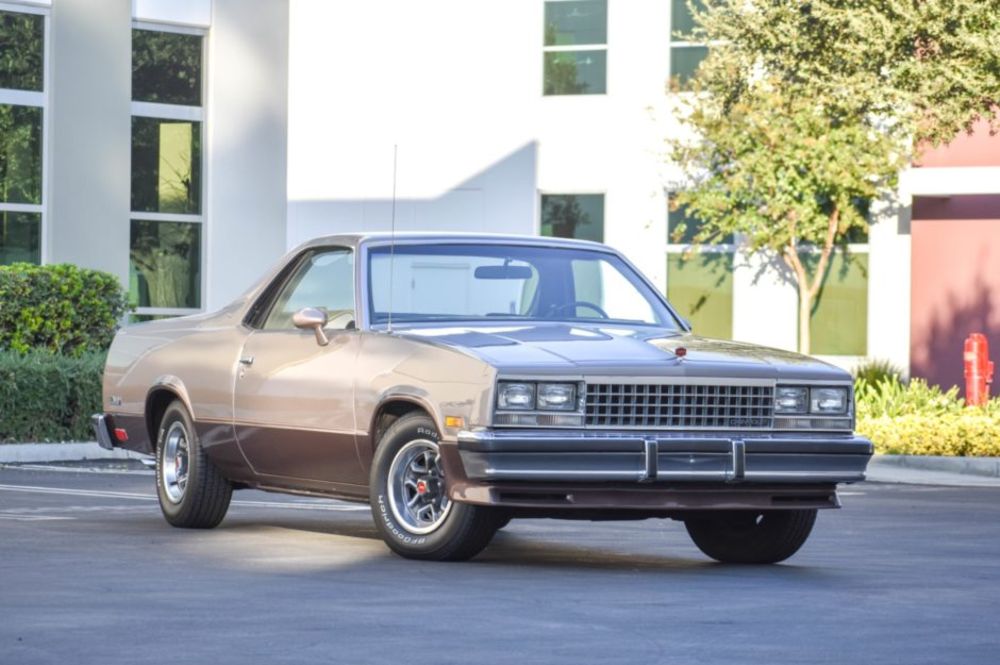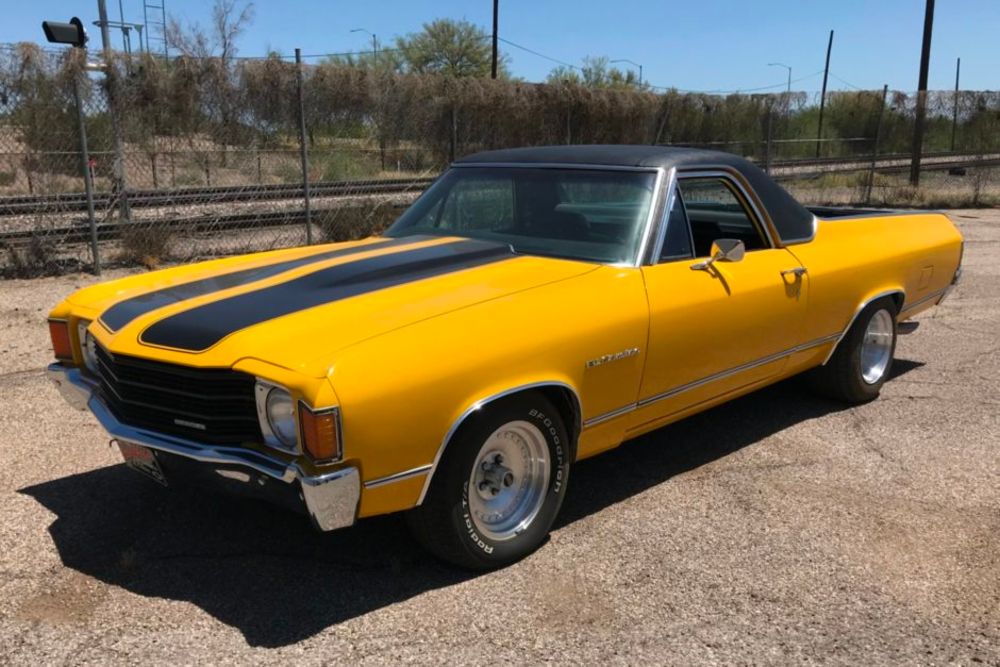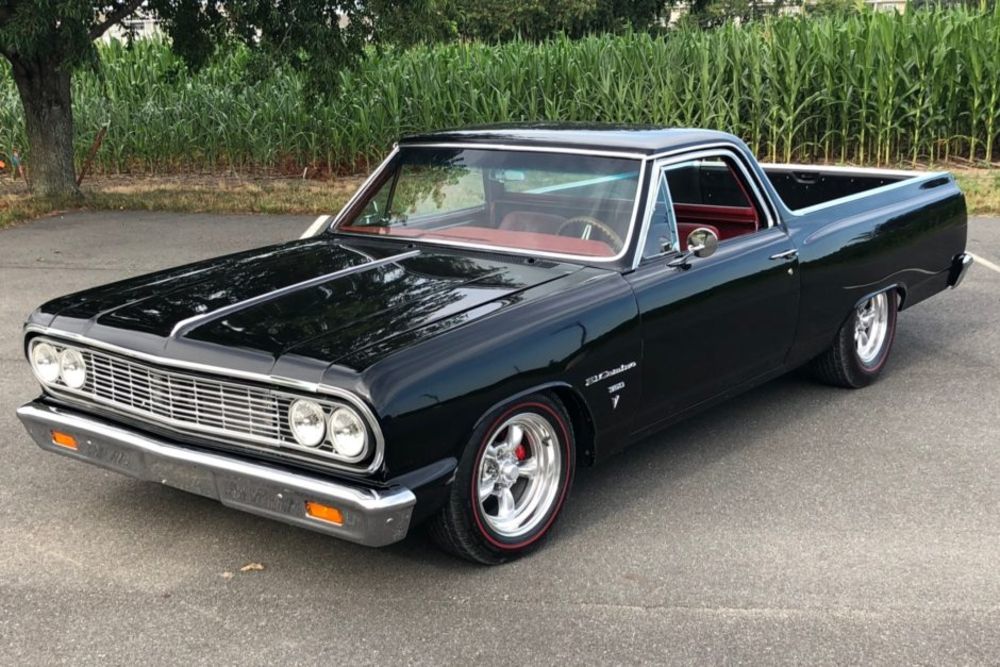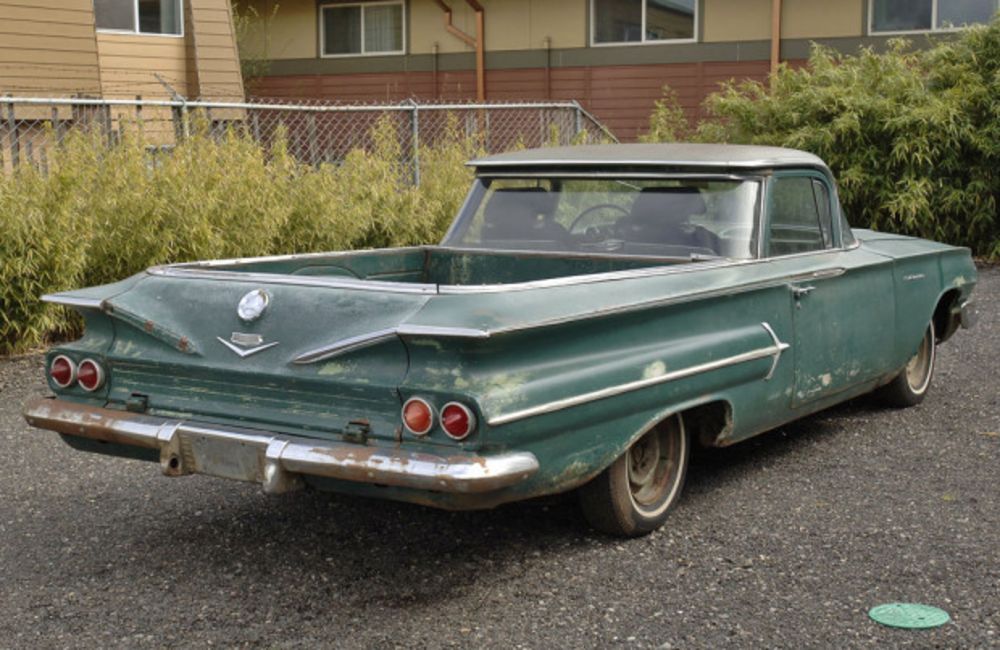What the Hell Ever Happened to the El Camino, and Why Did It End?

General Motors messed up by discontinuing the El Camino. When they didn’t bring it back a decade ago, they nearly ruined my life.
By the time I was born — late in 1988 — the Chevrolet El Camino had already been discontinued. Growing up in the snowy (and salty) Midwest, they disappeared from public view pretty quickly. I can probably count on one hand the number of times I saw El Caminos on the street as a kid.
On the rare occasions in which I did, my enthusiasm was invariably met with bemusement from those around me. Friends and family regarded the El Camino with some derision; it was “uncool.” The El Camino seemed to occupy the same space in their brain as cars like the Yugo and the Ford Pinto.
Soon, I learned to treat my El Camino enthusiasm like a closely guarded secret. That remained the case throughout most of my childhood until I ended up in high school. A friend, who was taking Spanish, and I had a conversation at lunch that went as follows:
“Dude, you ever heard of an El Camino?”
“Yeah, man, the funky car-truck thing. I know about ’em. Why?”
“I just learned in Spanish that el camino means ‘the way.’ Isn’t that the coolest thing you’ve ever heard?”
He was right. That was about the coolest thing I’d ever heard. That moment seemed to be a turning point for me, and my love of the El Camino. In high school, you’re chasing after the approval of your peers. Knowing that someone else liked the El Camino made it okay for me to like El Caminos. I was off and running.
History Lesson of a Legend
We’ll revisit my high school days again in a bit. Right now, we have to go back to the very beginning. As it turns out, the story both begins and ends in Australia. Back in the early 1930s, Ford Australia saw a need for a niche vehicle — one that behaved like a car, but with the utility of a small pickup truck.
Ford would release its first “coupe utility” in 1934, with Holden, GM’s Australian division, following suit a year later. This would be paralleled in 1957 when Ford would release the Ranchero here in America. Two years later, in 1959, the El Camino would debut. While GM designer Harley Earl is best remembered for his work on the Corvette, the El Camino was his baby, too. It was an idea he’d apparently had since 1952.
In high school, you’re chasing after the approval of your peers. Knowing that someone else liked the El Camino made it okay for me to like El Caminos. I was off and running.
The first generation El Camino would only stick around for two model years. After a brief hiatus, it returned in 1964, this time based on the Chevelle platform. This trend would continue through the third and fourth generations of the El Camino.
As it turns out, the coupe utility niche was fairly sizable, and El Caminos proved to be popular for decades. While Ford would discontinue the Ranchero after 1979, the El Camino would continue on with a downsized, A-body Malibu-based model until 1987.
Ahead of its Time
Just a few short years later, in 1991, Ford’s F-150 became not only the best-selling pickup truck in America but the best-selling vehicle, period. It’s hardly a stretch to say that the El Camino had a hand in getting Americans used to the idea of daily-driving a pickup.
For most people, though, the El Camino was a much better solution than a regular pickup. As useful as pickup trucks are, most owners don’t use them nearly as often as they think they will. Trucks — especially at that time — made many compromises in safety, performance, and handling in favor of load-carrying capability.
For most folks, the car-like ride, handling, and performance of the El Camino would have suited them better. The payload capability, while less than a full-size pickup’s, was usually more than enough for what most pickup truck buyers actually needed.
In the years since, it’s something of a sick joke to El Camino lovers like me that full-size pickups have become more car-like than ever. In addition, crossovers have rapidly replaced sedans and hatchbacks as America’s family car. Car-based utility vehicles are nothing new. In fact, one could make a compelling argument that coupe utilities like the El Camino were the first crossovers.
One Last Shot at Greatness
Even after discontinuing the El Camino in 1987, GM had one more chance to be ahead of the curve when it came to crossovers. In the earlier 2000s, Bob Lutz was in charge of bringing some excitement back to General Motors. He spearheaded the plan to bring the high-performance Holden Monaro over from Australia.
From 2004 to 2007, the Monaro was sold here as the Pontiac GTO. Instead of Mustangs and Camaros, though, it faced off against cars like the BMW M3. It was the thinking man’s muscle car, and throughout high school, it was my dream car. I even wrote my senior English research paper about the GTO’s history, starting back in 1964. The reborn GTO, along with repeated viewings of Mad Max, are entirely responsible for my love of Australian cars that continues to this day.
Unfortunately, the GTO was discontinued the same year I graduated high school, in 2007. Lutz had a surprise for me, and everyone else who loved the GTO. As it turns out, the Australians never stopped loving coupe utilities. In fact, they were just as large a part of Australia’s automotive culture as trucks are here. Over there, they called them “utes.” Holden even used that as the official name for their version starting in the year 2000.
Lutz planned to sell the Ute here as a Pontiac (after all, “We Build Excitement,” remember?), and there was even an online contest where fans could submit a name for the new vehicle, which was announced later in 2007 and set to debut sometime in 2009.
Everything Falls Apart
Naturally, “El Camino” was submitted by most folks, my teenage self included. Unfortunately, Pontiac, like a lot of domestic brands in the early 2000s, had recently gone to a rather uninspiring alpha-numeric naming scheme. It was announced that America’s first coupe utility in decades would instead be called the “G8 ST.”
Most folks grumbled a bit, but we didn’t really care all that much. It didn’t matter what it was called — it was always going to be an El Camino to us. I was in my freshman year of college when it was announced. I was looking forward to graduating, getting a good job, and signing on the dotted line for my very own El Camino.
Then, something awful happened — the 2008 global financial crisis. The dominoes fell fast at GM. First, no G8 ST (at least we got the G8 sedan for a couple of years). Then, no Bob Lutz. And, finally, no Pontiac at all. The excitement was dead.
GM could have had a shot at changing the trajectory of the crossover trend. Instead, we get tall jellybeans, with iPad dashboards and no soul — and, more importantly, no truck bed. The closest we ever got to a modern El Camino was the Chevy SSR, which came a few years earlier, but that’s a story for another day.
I didn’t end up finishing college, after all. With my tongue planted firmly in my cheek, I blame GM. With no El Camino to look forward to after graduation, why bother? GM, if you’re listening, it’s not too late. I still have a bunch of credits. I could go back. Just make it worth my while. Please.
Photos: Bring A Trailer; Hemmings; Classic Cars; Car and Driver; eBay; YouTube









